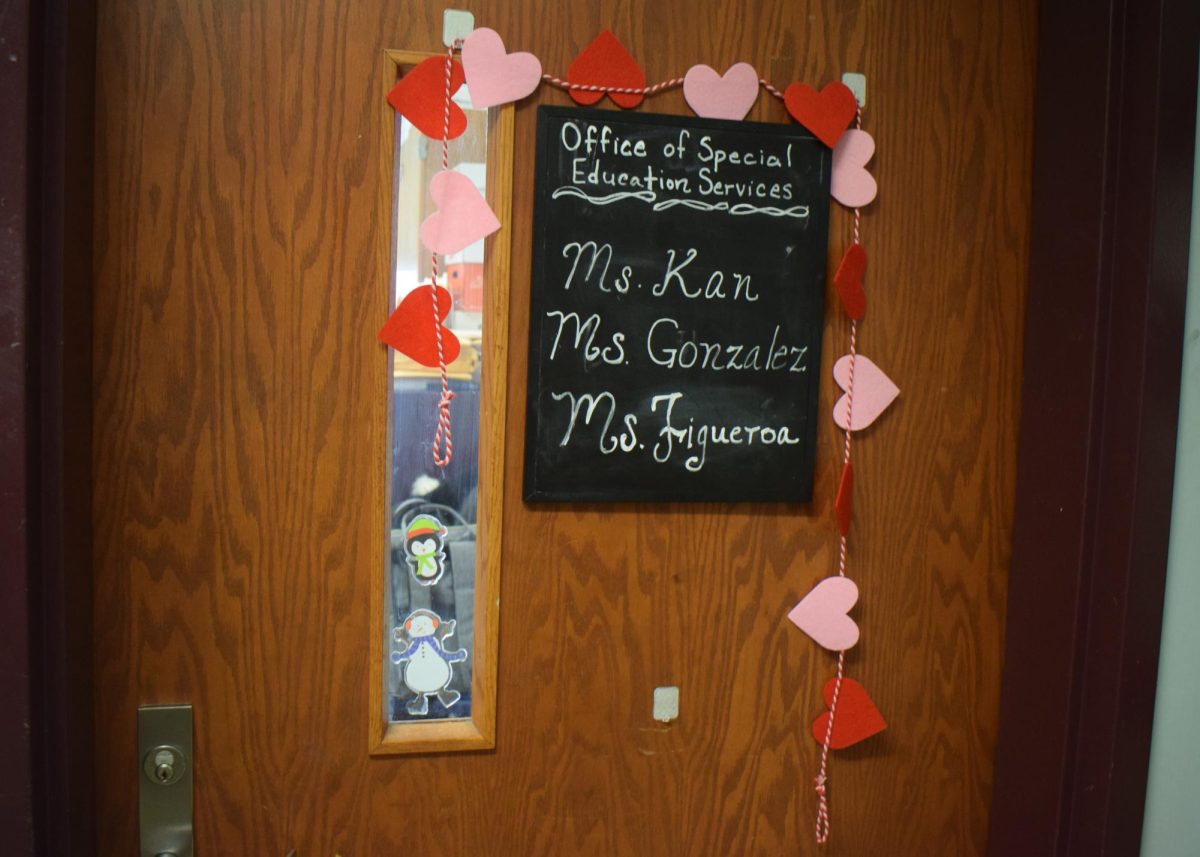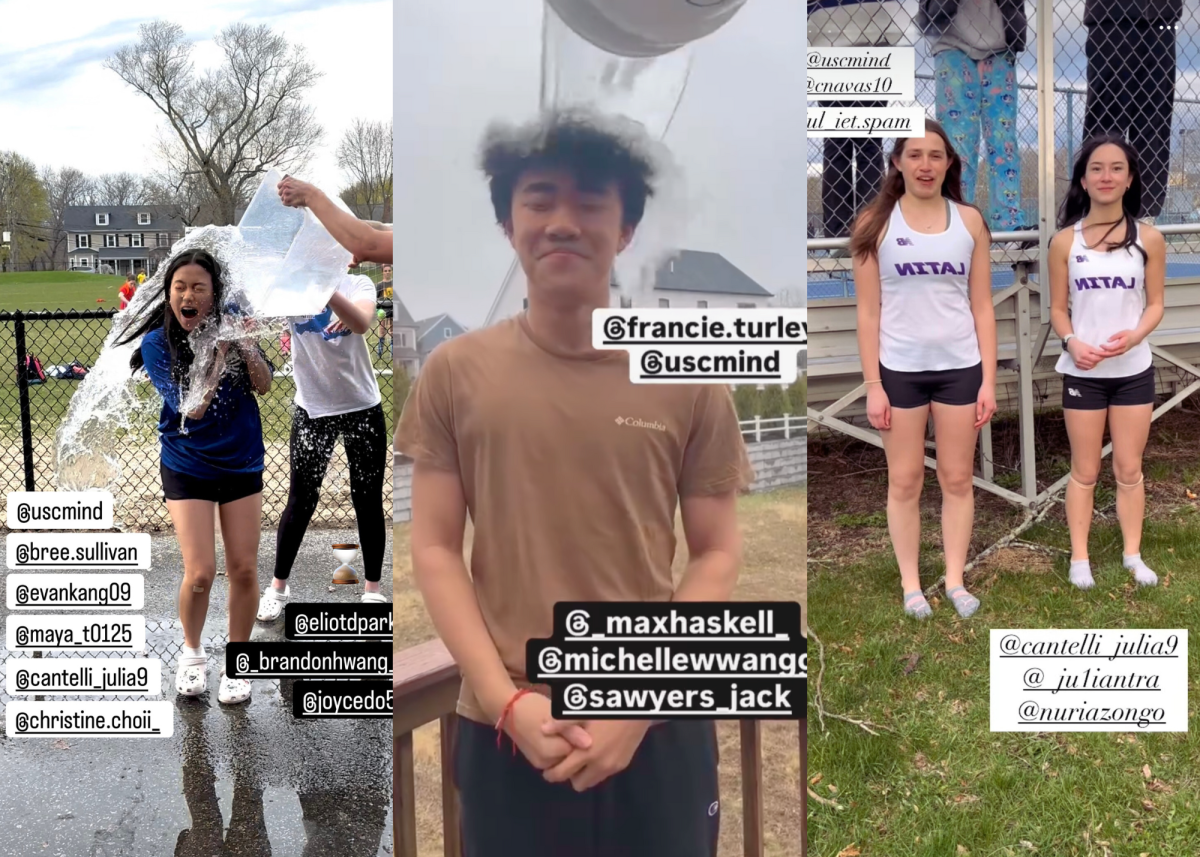During an assessment, you may have heard your teacher mention that some students may have extra time to complete it; but why is that so? Extra time is one of the most common accommodations that come with an Individualized Education Program (IEP) or 504 plan. Students with conditions that may impact their ability to learn in a general educational setting are able to apply for these documents to gain more specialized support throughout their education.
Currently, almost 300 students at Boston Latin School have either an IEP or 504. Discussion about special education, however, has been left in the dark, and many know little to nothing about it — let alone the intricacies of its problems.
What is the difference between an IEP and 504 plan?
With an IEP, a student will have access to a written plan that entails free special education services and support, including specialized instruction by a special education teacher and/or a related service provider (counselor, speech therapist, occupational therapist, physical therapist), as well as accommodations that general education classroom teachers have to abide by.
These accommodations and services are meant to help the student strive towards the goals and objectives set out in the IEP, which generally aim for higher academic performance and participation, with meetings every year to update the IEP and every three years to document the student’s progress.
IEPs are under Part B of the Individuals with Disabilities Education Act (IDEA). IDEA is a federal law that concerns all matters relating to special education, ensuring that proper services are available to all students who may need them. Essentially, an IEP is a legally binding document with the purpose of supporting and improving a child’s education, considering their specific needs.
The process and requirements for getting an IEP, however, are not only rigorous, but also rather niche. Since IEPs are under IDEA, the child in question must have at least one from 13 educational disabilities it lists.
Students who are unable to get an IEP may consider looking into eligibility for 504 plans, which provide accommodations for students who need these for equal access but do not require specialized instruction. Though they are more vague in instruction and creation, their benefit is the broadness of who can qualify for them.
504 plans are under Section 504 of the Rehabilitation Act of 1973. Though IDEA and Section 504 are both related to aiding students with disabilities, they are not synonymous. IDEA is a general federal law that concerns everything relating to special education and ensuring proper services for students who match its criteria. Section 504, meanwhile, is a civil rights statute that requires that schools do not discriminate against students who need assistance to equally access the curriculum. IDEA guarantees that a child will receive accommodations, paid for by the government, while Section 504 mandates what free support the student needs, but does not provide it directly.
What are students’ current issues with how IEPs and 504s are carried out?
Despite the fact that IEPs and 504 plans are legally binding, BLS students have cited cases where teachers do not follow the accommodations.
According to interviewed students, the most frequent of these scenarios is when the teacher simply did not read their student’s IEP or 504 plan thoroughly enough. Even months into a school year, teachers would not be aware of a student’s needs; “I could maybe excuse it if it was still September,” Zinnia Davis (II) explains, recounting an experience she had with her teacher. “But [it was] November.”
This means that it is the student who must initiate the conversation. Sophia Maldonado Werk (I) notes,“Usually, I end up having to tell teachers myself.” The responsibility of ensuring that students receive their legally mandated support should not rest with them; nevertheless, it is normalized for teachers — who are meant to support students — to be the ones being educated instead.
Even after reading a student’s IEP or 504 plan, some teachers continue to ignore its contents.
Although students with accommodations are no less hardworking than their peers, there is still implicit bias that these supports are coddling them. “I think lots of teachers undermine students with accommodations on the notion that it seems like we’re ‘lazy,’” Ginger Suh (III) observes.
To some, the greater quality of life and education that come with accommodations are seen as an almost unfair advantage given to only a select few students. What they fail to realize, however, is that these accommodations are not bonuses to them, but necessities so that they can perform alongside their peers in a traditional classroom environment.
This notion is especially applicable to teachers, who must alter their class environment or assignments for the students. Molly McDermott (I) comments, “I think some teachers interpret accommodations as ways to get out of doing work, which is extremely harmful not only for students’ grades but that creates a sense of guilt in students that they ‘should’ be able to do certain things that should be accommodated by the teacher.”
The stigma around special education is not only the source of its problems, but also what actively prevents the solution; why would a student try to correct teachers when they slip up if they will just think less of them, and when the rigorous academic culture at BLS tells them that they are the ones who need to do better?
The silence, however, will not help the student either. “The more we hide the fact that [what] should be happening isn’t happening, the more stigmatized the kids feel,” BLS Special Education Coordinator Ms. Daila Davila-Gonzalez presses. “Who are we protecting, the students or the teachers?”
The whole purpose of IEPs and 504 plans is to support a student’s unique needs; often, however, the students themselves are left out of the discussion of what goes into them. “Recently, when I have meetings to update it, they’ll either not include me or not include my mom in the meetings or just emails about it,” Werk remarks. “Sometimes my mom will be like, ‘We have a 504 plan meeting tomorrow’ and I wouldn’t have heard about it.”
Without the student there to voice their needs and desires, the result can be an IEP or 504 plan that does not adequately address the student’s needs — or even worse, does not make sense. “Sometimes the IEPs are not written as clearly as they could be, and that can be a source of friction,” BLS Latin teacher Ms. Margaret Burns elaborates. “Because we’re not sure what you want and it seems like it’s contradictory […] how can I do both of these things when one involves not doing the other?”
What are the sources of these issues, and how can we fix them?
The prestigious culture at BLS has made it difficult for students to talk about their IEPs and 504s; for a long time, students with special education plans were viewed as below the BLS standard. This belief went largely unchallenged because until very recently, there were extremely few students with IEPs and 504s at BLS. This is because the Independent School Entrance Exam that used to admit students to BLS did not allow for accommodations, making it nearly impossible for students that needed them to get in. Now, with a more holistic admissions program, the number of students with IEPs has increased well over tenfold, and though there has been progression past old beliefs, it is struggling to keep up.
“For our school, the hard part has also been the shift in culture.” Ms. Davila-Gonazlez explains. “You have a [wide diversity of] teachers, but […] there are still a certain amount of folks in this building that feel like, ‘this is Latin School, this is not what was done before.’”
The exponential growth of students with IEPs and 504 plans can be jarring for teachers who have grown accustomed to one way of teaching. “They’re considered experts in their field — that’s why they teach here,” Ms. Davila-Gonzalez continues. “And sometimes, when you’re introduced to something you don’t really know what to do with and you no longer feel like the expert, people react differently.”
Although the transition may be difficult, teachers must realize that all these changes are for the benefit of the students. “If it makes a difference to how a kid feels taking the test, [or] makes them calmer, it’s totally worth it if it’s going to be a better outcome,” Ms. Burns emphasizes. As teachers, their highest priority should be their students’ success — and it is not as though these students are any less able than their peers. Ms. Davila-Gonzales explains, “Very skilled, very intelligent individuals sometimes have either medical issues or other [disabilities] where they are completely capable and able to access the kind of instructions that you get here [at BLS] in terms of content, but maybe just need other scaffolds or supports in place.”
It is impossible to begin the path to normalization of special education without there first being open discussion about it. While breaking down the taboo surrounding those who have accommodations would definitely be helpful, there is still one more factor that limits what teachers can and will say about their struggles: the Family Educational Rights and Privacy Act (FERPA).
The FERPA is what ensures the privacy of all students’ “educational records” under their school — and this includes matters surrounding their IEPs and 504 plans. If teachers were ever to talk about how they were unable to comply with a student’s accommodations and happened to mention them by name, they would have to face legal repercussions for breaking the law. No matter how difficult or nuanced the situation, disclosing any information about specific students without the consent of their legal guardians means that they would not be abiding by FERPA. This is why so many teachers are tight-lipped about their own and their colleagues’ difficulties with accommodations; they could get sued.
Teachers do not need to talk about each student whose IEP or 504 plan they have struggled with, nor list out every specific situation they have been through in order to receive guidance from others. Learning how to navigate IEPs and 504s alone can be daunting; by communicating openly with each other, however, teachers can share and learn their most effective methods for accommodation.
Without looking through the lens of fear, teachers will realize that IEPs or 504s are not a challenge to their teaching style — in fact, most accommodations do not call for anything drastic. “It’s very, very rare that there’s any change to the curriculum,” Ms. Burns clarifies. “They need some extra things […] but we don’t have to rewrite how we teach Latin 4 so that a kid with an IEP can do better.”
What can students learn from this?
Despite increasing efforts around accessibility, when these students graduate, they are thrust into a world that is not guaranteed to be as accommodating. That does not mean that they no longer have protection under the law — plenty of federal civil rights laws like Section 504 will still apply. They will, however, no longer have the same support system guiding them, says Ms. Davila-Gonzalez. “After you leave this building, the one thing about those laws and getting that kind of support is that nobody can initiate that conversation for you.”
This does not mean students who graduate will be alone in their efforts seeking accessibility; the entire BLS community must work together to create an environment, both in and out of school, where students with learning disabilities feel comfortable speaking about their experiences. “In my time being here, the students have been a big part in helping to [destigmatize] that,” Ms. Davila-Gonzalez acknowledges.
As modern progressivism emphasizes inclusivity and acceptance, the younger generation of students at school serves as an exemplar. By normalizing accommodations and treating students with learning disabilities as the equals they are, special education will no longer be a topic that is only relevant to those who are in it. Those with accommodations won’t need to fear ostracization or retaliation for calling out teachers when they make mistakes, and will be unabashed to approach the staff who are there to support them. The School’s faculty and students must begin to engage in open dialogue on learning; only then, the entire school community is able to thrive.








